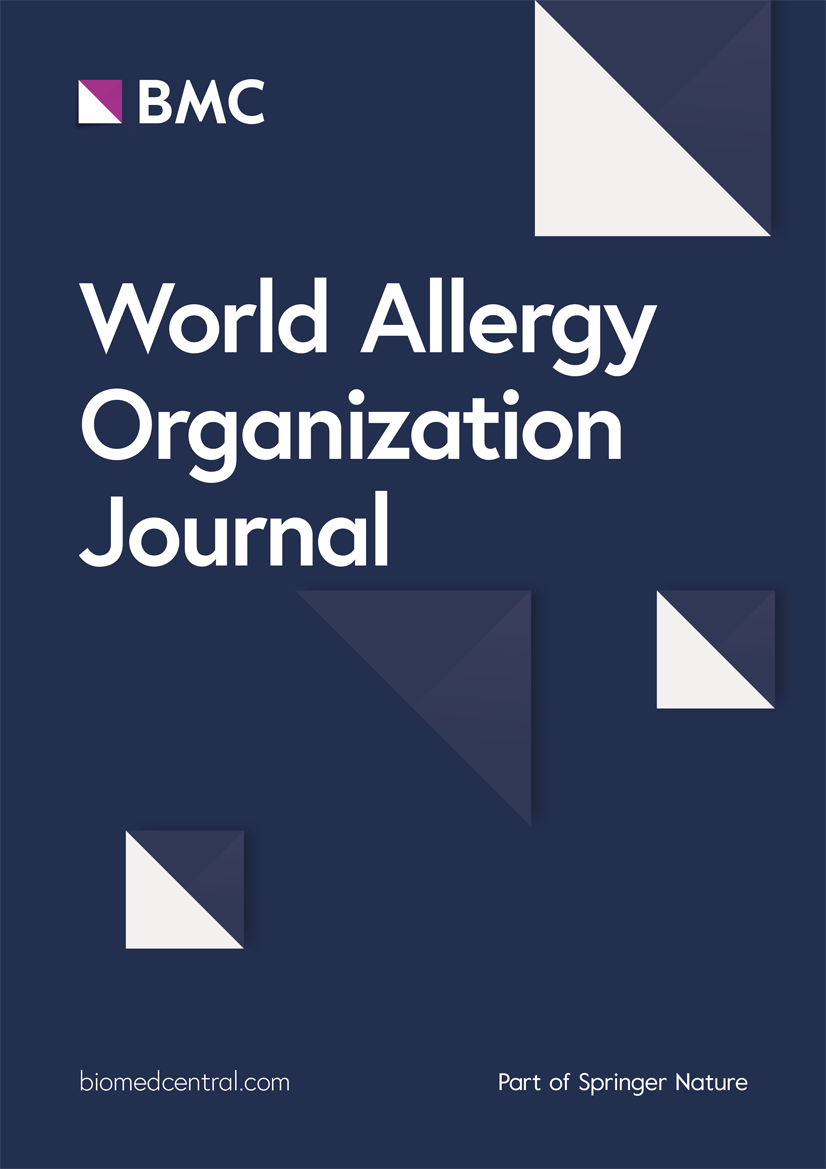血管紧张素转换酶抑制剂诱导的血管性水肿:诊断评分的建议
IF 4.3
2区 医学
Q2 ALLERGY
引用次数: 0
摘要
目的血管紧张素转换酶抑制剂(ACEI)诱导的血管性水肿(AE-ACEI)可能危及生命,因此应停止治疗。然而,服用ACEI的患者也可能出现肥大细胞介导的血管性水肿(AE-MC)。在服用ACEI的患者中,区分AE-ACEI和AE-MC有时很困难。我们建议确定与AE-ACEI患者诊断相关的因素。材料与方法在格勒诺布尔阿尔卑斯大学医院和拉雷姆联合大学医院进行多中心回顾性研究。所有疑似诊断为AE-ACEI的患者均纳入2019年1月至2022年1月期间的研究。最终诊断是由专家医师在至少1年的随访和生物检查后确定的其他缓激肽介导的血管性水肿。结果共分析93例患者,49例最终诊断为AE-ACEI, 44例最终诊断为AE-MC。多因素分析确定了与AE-ACEI最终诊断相关的4个因素:引入ACEI与会诊之间AE个数≤3 (OR: 7.93 [1.60-50.7], p = 0.017)(1分),AE持续时间严格大于24 h (OR: 8.41[2.07-44.5], p <;0.01)(1分),重症监护病房住院(OR: 7.14[1.19-50.0], p = 0.045)(1分),停用ACEI后不论延迟均无AE复发(OR: 16.7[3.37-125], p <;0.01)(2分)。该5分诊断评分(AUC: 0.85[0.75-0.95])在0-2分(敏感性:0.93,特异性:0.35)和4 - 5分(敏感性:0.53,特异性:0.97)之间识别AE-ACEI的低概率患者。结论在血管性水肿专家中心会诊后,近半数患者排除了AE-ACEI的诊断。我们确定了一个5分的评分,可以帮助诊断AE-ACEI,并决定终身禁用ACE抑制剂。本文章由计算机程序翻译,如有差异,请以英文原文为准。
Angiotensin-converting enzyme inhibitor-induced angioedema: Proposal for a diagnostic score
Objective
Angiotensin-converting enzyme inhibitor (ACEI)-induced angioedema (AE-ACEI) may be life-threatening, and the treatment should therefore be discontinued. However, patients taking ACEI may also have mast cell-mediated angioedema (AE-MC). Differentiating between AE-ACEI and AE-MC in patients taking ACEI is sometimes difficult. We propose to identify the factors associated with the diagnosis of AE-ACEI in patients.
Materials and methods
A multicenter retrospective study was carried out at Grenoble Alpes University Hospital and University Hospital of La Réunion. All patients referred for suspected diagnosis of AE-ACEI were included in the study between January 2019 and January 2022. The final diagnosis was made by the expert physician after a minimum follow-up of 1 year and after a biological work-up ruling other bradykinin-mediated angioedema.
Results
A total of 93 patients were analyzed, 49 with a final diagnosis of AE-ACEI and 44 with a diagnosis of AE-MC. Multivariate analysis identified 4 factors associated with the final diagnosis of AE-ACEI: number of AE between the introduction of ACEI and the consultation ≤3 (OR: 7.93 [1.60–50.7], p = 0.017) (1 point), duration of AE strictly greater than 24 h regardless of the treatments administered (OR: 8.41[2.07–44.5], p < 0.01) (1 point), hospitalization in intensive care unit (OR: 7.14[1.19–50.0], p = 0.045) (1 point) and no recurrence of AE after stopping ACEI, regardless of the delay (OR: 16.7[3.37–125], p < 0.01) (2 points).
This five-point diagnostic score (AUC: 0.85 [0.75–0.95]) identifies patients with a low probability of AE-ACEI when the score is 0–2 (sensitivity: 0.93, specificity: 0.35) and a high probability when it is between 4 and 5 (sensitivity: 0.53, specificity: 0.97).
Conclusion
After a consultation in an angioedema expert center, the diagnosis of AE-ACEI has been excluded in almost half the patients. We identified a five-point score that could help in the diagnosis of AE-ACEI and in the decision to contraindicate the use of ACE inhibitors for life.
求助全文
通过发布文献求助,成功后即可免费获取论文全文。
去求助
来源期刊

World Allergy Organization Journal
Immunology and Microbiology-Immunology
CiteScore
9.10
自引率
5.90%
发文量
91
审稿时长
9 weeks
期刊介绍:
The official pubication of the World Allergy Organization, the World Allergy Organization Journal (WAOjournal) publishes original mechanistic, translational, and clinical research on the topics of allergy, asthma, anaphylaxis, and clincial immunology, as well as reviews, guidelines, and position papers that contribute to the improvement of patient care. WAOjournal publishes research on the growth of allergy prevalence within the scope of single countries, country comparisons, and practical global issues and regulations, or threats to the allergy specialty. The Journal invites the submissions of all authors interested in publishing on current global problems in allergy, asthma, anaphylaxis, and immunology. Of particular interest are the immunological consequences of climate change and the subsequent systematic transformations in food habits and their consequences for the allergy/immunology discipline.
 求助内容:
求助内容: 应助结果提醒方式:
应助结果提醒方式:


